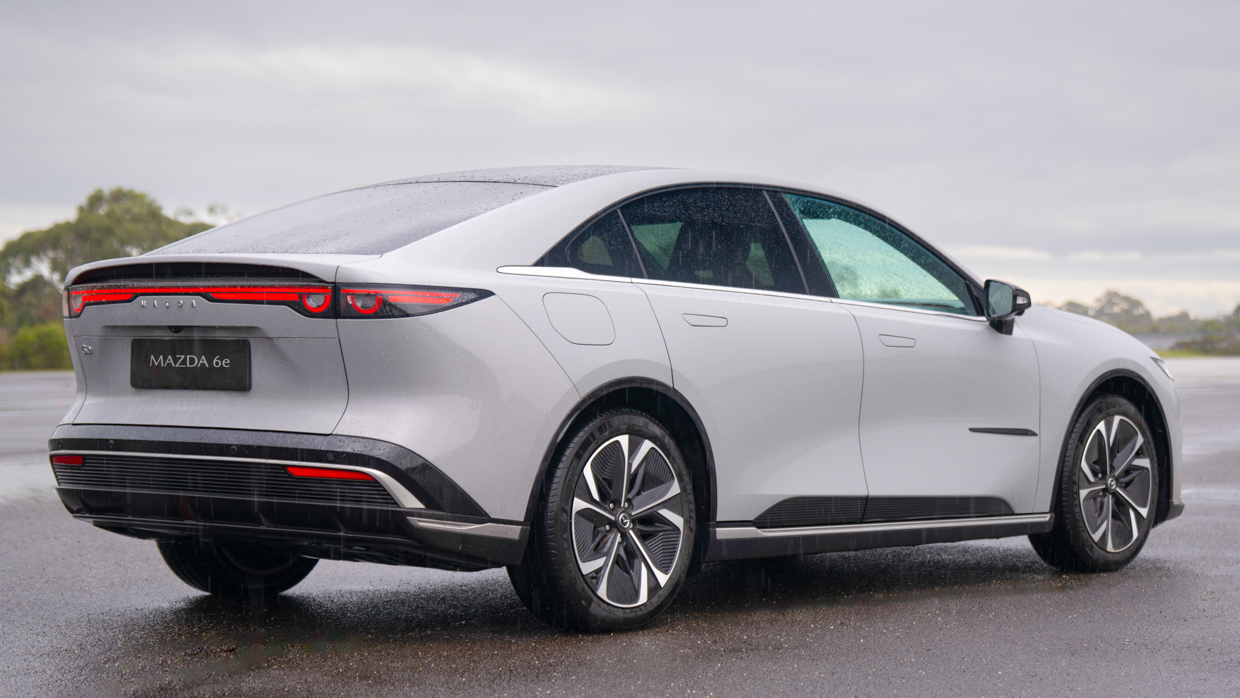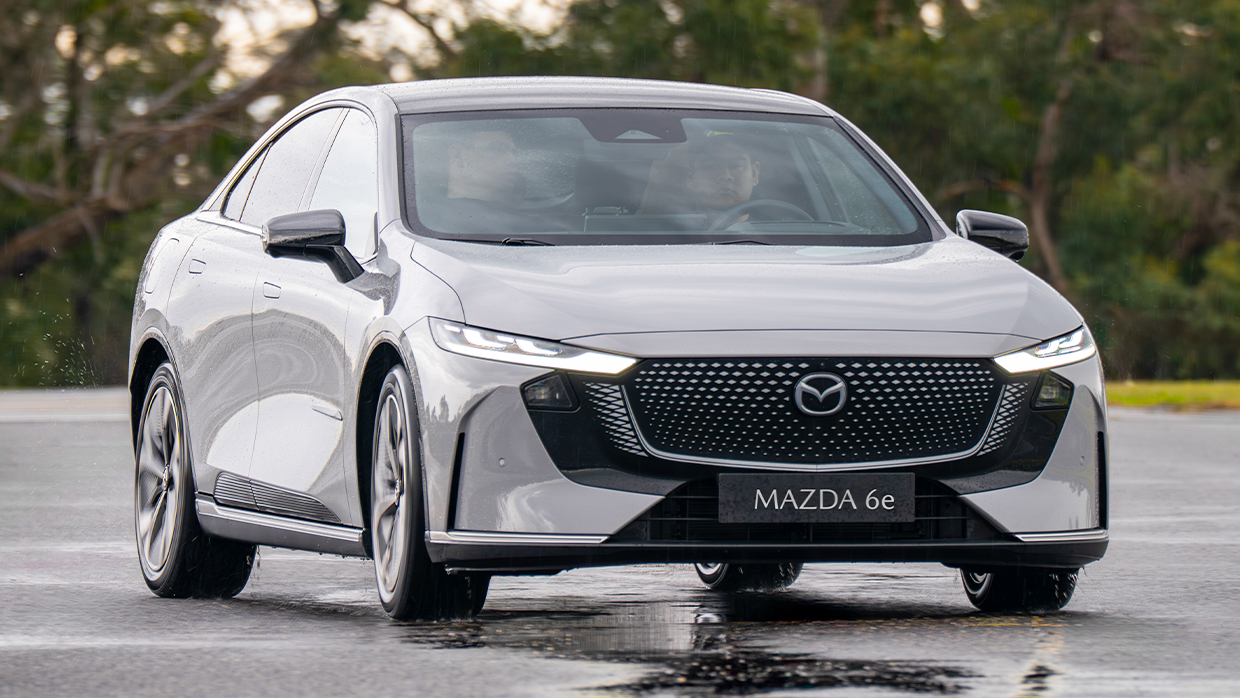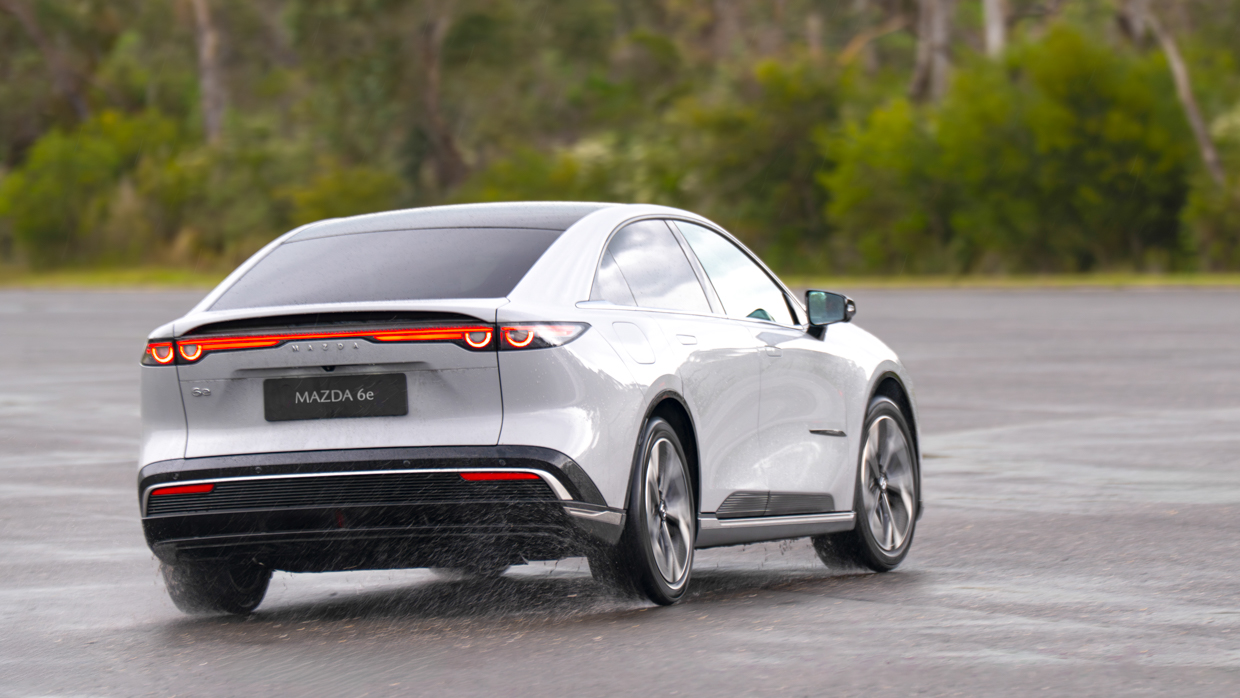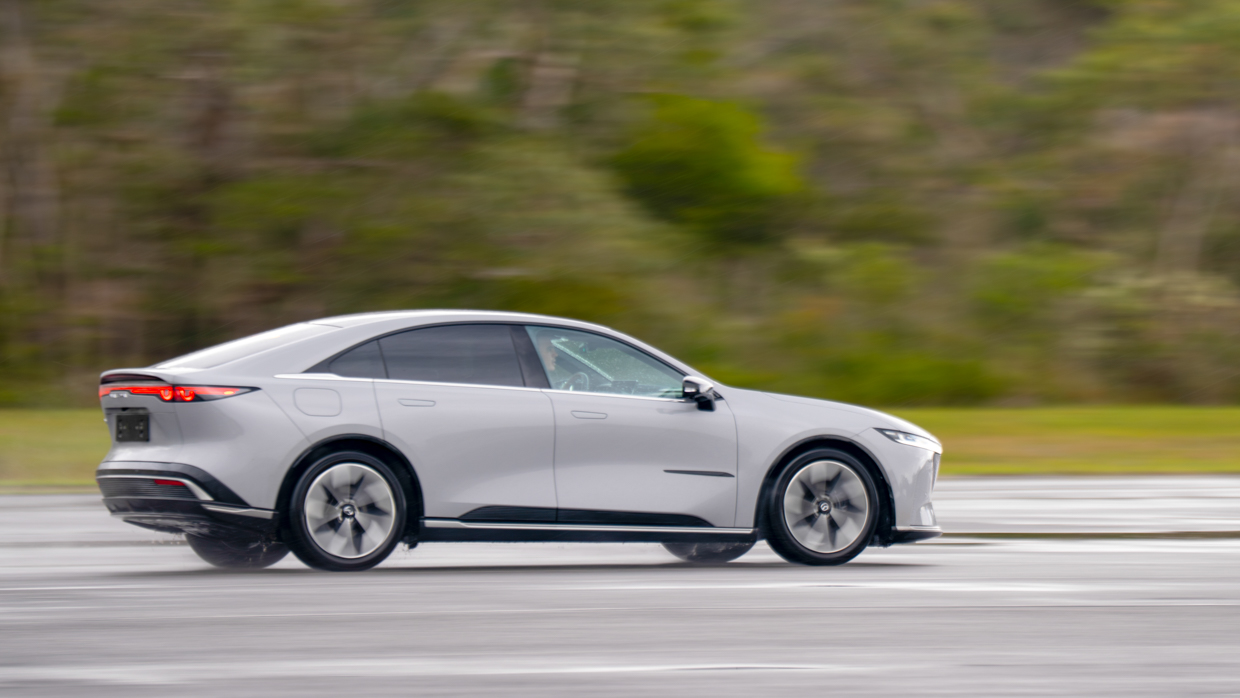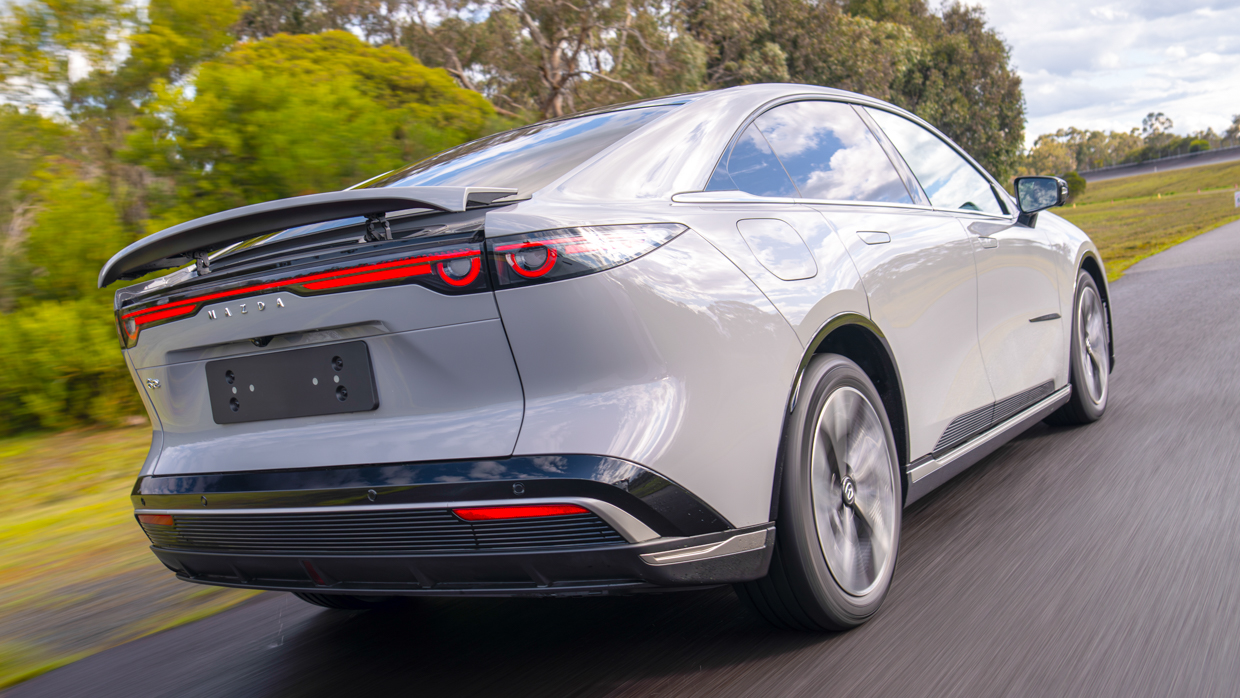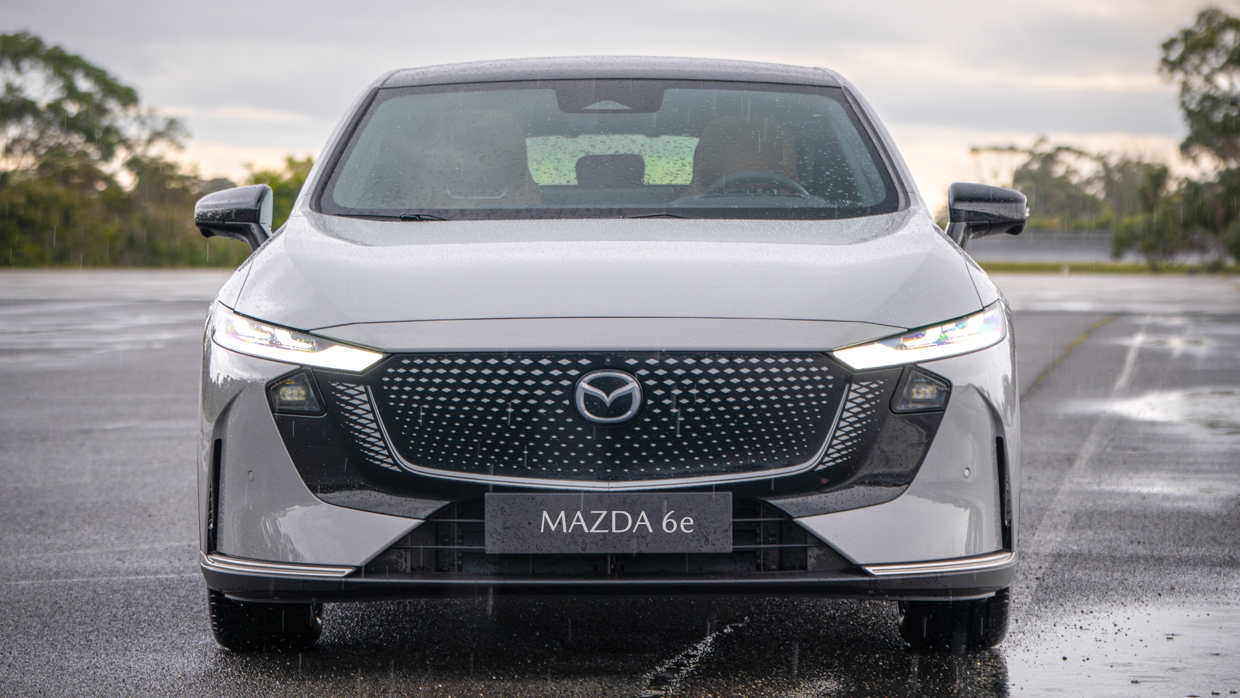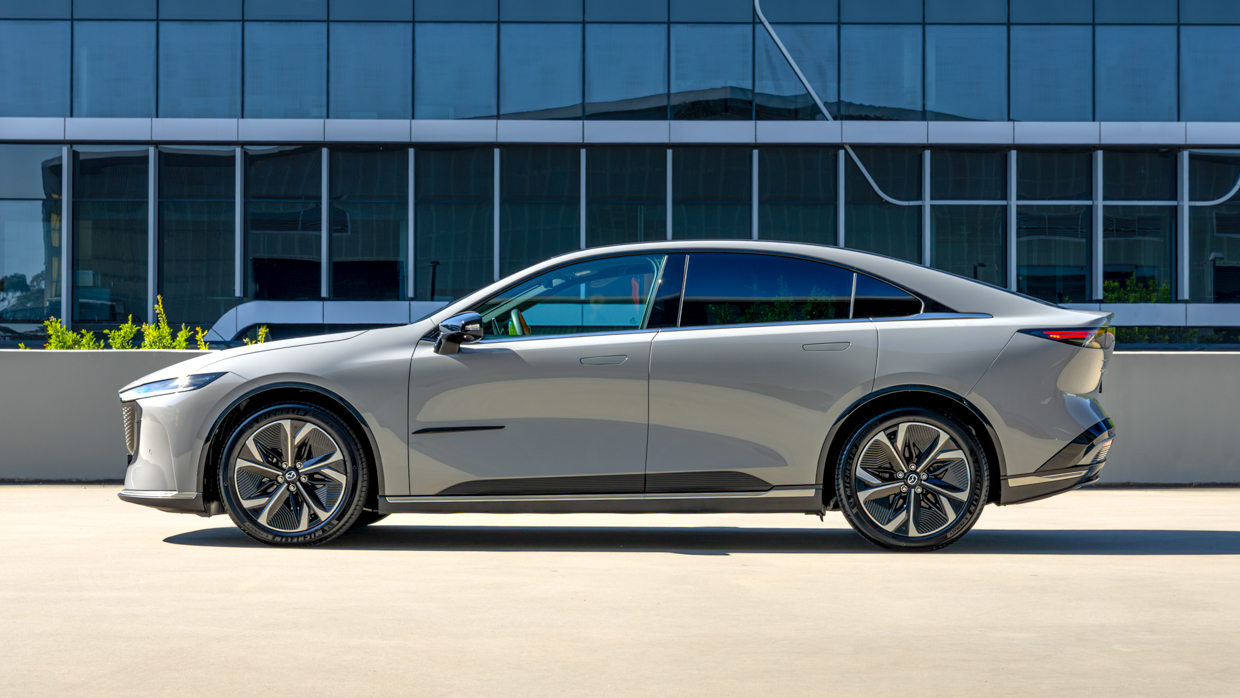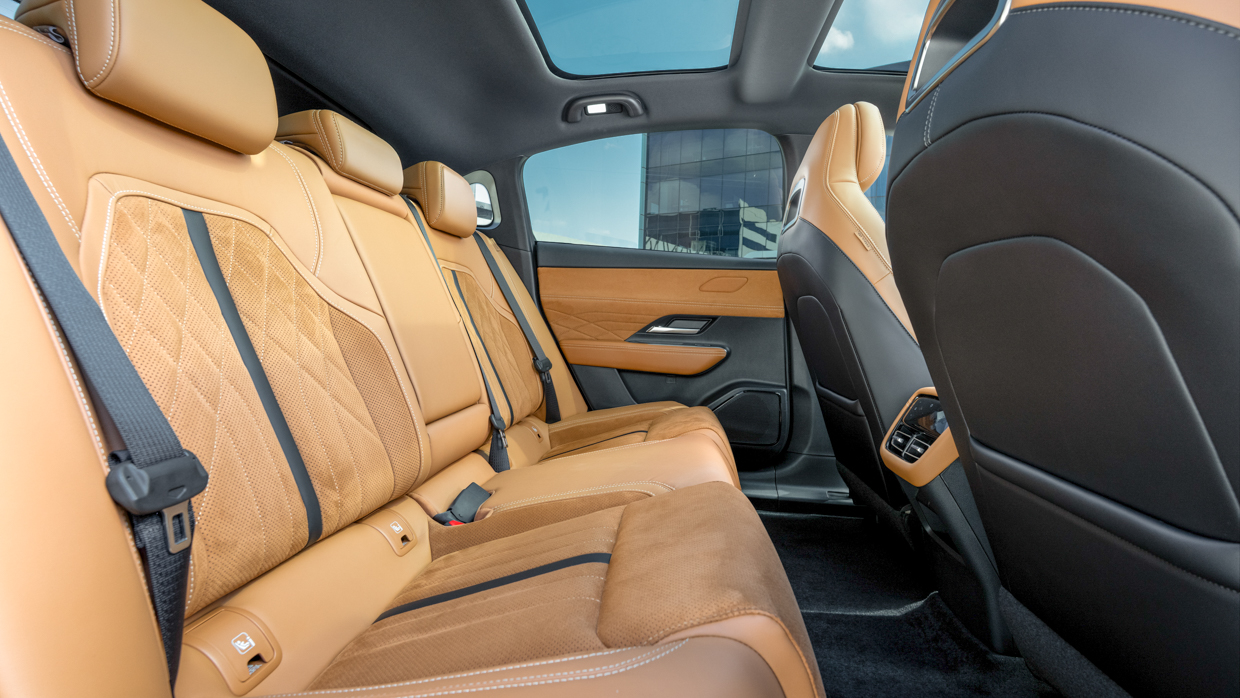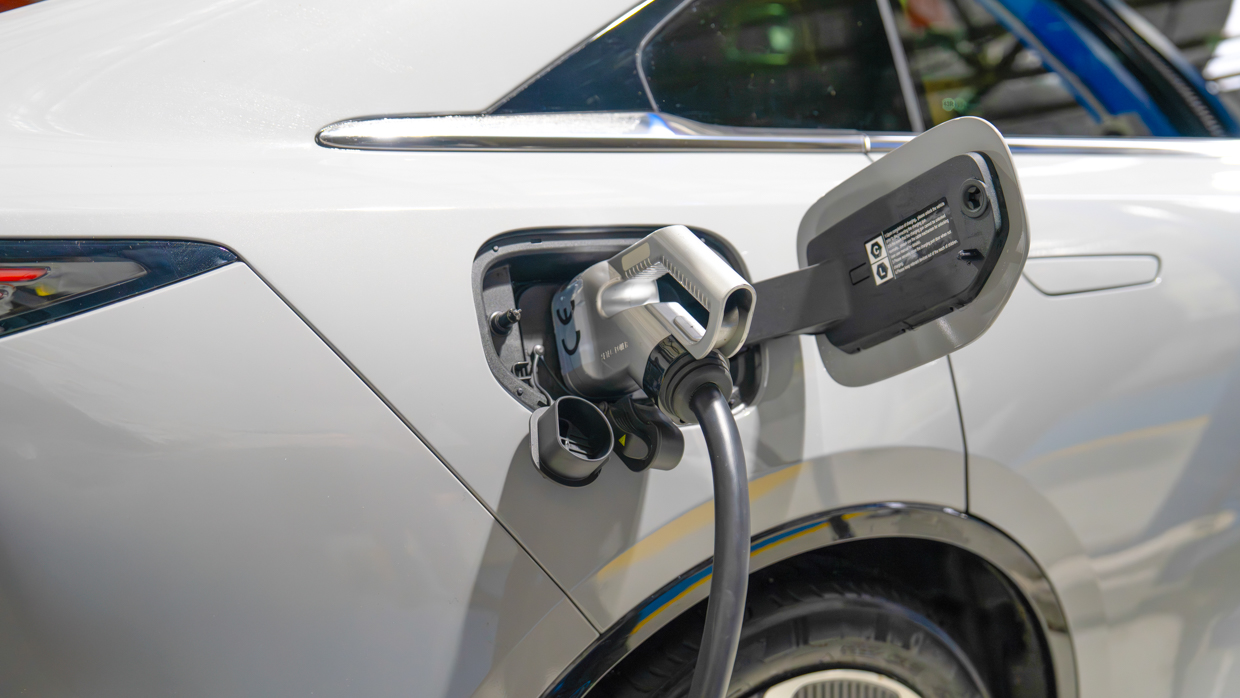-
Car Reviews
- All reviews
- Midsize SUVs
- Small cars
- Utes
- Small SUVs
- Large SUVs
- Large cars
- Sports SUVs
- Sports cars
- Vans
Latest reviews
- Car News
-
Car Comparisons
Latest comparisons
- Chasing Deals
Mazda’s European engineers are responsible for making the Chinese-made Mazda 6e steer, handle and ride like a Mazda should. But have they succeeded?
For a relatively small, stand-alone company like Mazda – selling around 1.3 million vehicles per year – developing a bespoke EV model line was always going to require some kind of joint-venture.
In this case, it’s with state-owned Changan Automobile from Chongqing in China (who Mazda has had a 20-year association with), producing the car you see here – the all-electric, fourth-generation Mazda 6e.
Sharing its EPA1 electric-vehicle platform with Changan’s own Deepal S07 medium SUV (sold in Australia) and the closely related Deepal SL03/L07 liftback-sedan, the rear-wheel-drive Mazda 6e debuted in 2024 as the fourth generation of the Japanese brand’s mid-sized model line, built by Changan Mazda in China and sold there as the EZ-6.
Badged Mazda 6e for export and already on sale in Europe, this Tesla Model 3-rivalling electric liftback-sedan shares its 2900mm wheelbase with both Deepal models, and its width and height with the SL03, but has received comprehensive tuning by Mazda Motor Europe in Germany to meet European (and Australian) tastes, and imbue Mazda’s sporting dynamic DNA into this joint-venture vehicle.
Australian motoring media spoke to Alexander Fritsche, senior manager product development and engineering for Mazda Motor Europe, about how they went about revising the dynamics and NVH refinement of the Mazda 6e prior to us experiencing a 30-minute taste of a left-hand-drive, Euro-spec car at GM-Holden’s former Lang Lang proving ground.
Using the Deepal SL03 as a base, Fritsche said they quickly realised that the Chinese approach to dynamic tuning is very different from the needs of European drivers.
“We made the decision to rework especially the firmness, the rigidity feel for the chassis, so we actually had to reset some parameters [and] also some hardware.”
“So the rear subframe had to be completely reworked and remade [for much better control compliance], because the rear, in particular, was feeling completely different to that what we expect.
“We actually made a very deep rework on the dampers and bushings, the EPAS [electric power steering] an also the driveability characteristics … the confidence feeling, the stability requirement, and on top [of that], the Mazda taste, the Mazda DNA,” said Fritsche.
“We had to increase the thickness of the stabiliser bars because the steering ratio of this vehicle is very aggressive in comparison to classical Mazda vehicles … so we needed to basically stabilise the vehicle, also for the front axle.
“We needed roll control, so we needed to increase this to technically the maximum level to make the car not roll or move uncontrolled on European roads. This why we had to really work with the damping force alignment for the front and rear to make the vehicle feel stable, while still providing comfort.”
“We also decided to change the tyres [to Michelins] – providing more rigidity, more absorption feel, more harshness control and also good rolling resistance.”
“So this helped us pretty much get a driving feel for the European taste,” he said.
“There were some preconditions, you can imagine, because the base car was preset, and so we had to cope with these environments in terms of hardware limitations, software structure and, of course, also budget limitation.”
“So things we wanted to implement were, to some extent, not always possible due to the limitation of the structure, [as well as] a different way of thinking for the [vehicle design] philosophy. But overall, we had very good cooperation between the three parties [Europe, China and Japan].”
Following this engineering collaboration, Fritsche said that what he learnt during this process was just how different the tastes are between European driving feel and what the Chinese prefer.
For Europe, it’s the interaction between driver and machine, with a focus on higher speeds and the driver being in control. In contrast, the Chinese customer is concerned with comfort, electrical devices and HMI interfaces – as well as very light steering – and prefer the car to tell them what to do, rather than the other way around.
Our first taste of the Mazda 6e – a high-spec European model on 19-inch wheels with 180kW/320Nm, an 80kWh NMC battery and a 7.8sec 0-100km/h claim – demonstrated the fine work that Mazda Motor Europe has achieved in smoothing the driving characteristics.
There is a distinct absence of the light-switch calibration abruptness of many Chinese EVs that frequently results in a vehicle that is impossible to drive smoothly.
In contrast, the Mazda 6e is very smooth – perhaps too smooth in its modest accelerative performance above 100km/h and its relatively ineffectual regenerative-braking response, even when set to ‘strong’.
This powertrain assessment isn’t really valid seeing Australia will be getting a unique 78kWh LFP battery and a 190kW power output (the torque figure has not been released as yet), meaning our Mazda 6e may well offer stronger acceleration and more of a performance feel – which we hope it does.
The Mazda 6e’s electric steering calibration and damping tune are also expected to receive further tweaks before Australian on-sale in the second quarter of 2026, but for now, signs are promising.
While the steering weighting in ‘Comfortable’ remains super-light, even after Europe’s EPAS tweaking, there’s a degree of weighting build-up under initial turn-in, but not enough in faster corners.
‘Sport’ and ‘Custom’ drive modes allow for a firmer steering tune, which is much more in line with Mazda’s DNA (though still light compared to a CX-60 or CX-80) and combines well with the fast-geared steering rack delivering 2.5 turns lock-to-lock.
Guided by a lovely two-spoke leather wheel, the 6e steers keenly and precisely, without any nervousness.
Loaded up around Lang Lang’s ride and handling loop, the 6e displayed a neutral handling balance and a confident stance (weight distribution is close to 50/50), with a mild degree of rear-end adjustment too – more so than we were expecting after hearing Alexander Fritsche’s description of the ESC’s conservative tune regarding oversteer mitigation.
But pushing hard through undulating corners while testing the Mazda 6e’s damping, it tended to squirm more than expected, engaging the ESC with a chirp at the rear end as it braked the rear tyres trying to prevent roll-oversteer. In that regard, it’s still not quite as tight in terms of body control as it could be.
That said, it rode well over the lumps and bumps encountered at Lang Lang, despite wearing 19-inch wheels, so hopefully Mazda doesn’t go too far in the other direction and deliver yet another uncomfortable-riding EV, or an over-firm ride like the CX-60 four-cylinder.
The 6e also demonstrated its body strength over corrugations and severe undulations, despite it having frameless doors, though the driver’s window did suffer from some wind intrusion at three-figure speeds on what was a very windy day.
Finally, to the cabin. Our test 6e’s tan interior treatment with perforated Alcantara upholstery felt pleasantly luxurious, combined with impressive seat support, a very Mazda-esque driving position, great forward vision, and a satisfyingly solid ‘thunk’ when closing the frameless doors.
The large centre touchscreen seemed quite amenable too, though you wouldn’t call its graphics ‘premium’, or very Japanese.
I’m not personally sold on the styling either – it seems a little thick-limbed for me compared to the svelteness of the previous Mazda 6 – though it looks better in the flesh than in photos and may pop better in colours other than our test car’s insipid grey. Still, at least the interior isn’t also grey!
Mazda Australia hasn’t confirmed the 6e’s variant line-up for its Q2 2026 launch but it will be a small, high-spec range of at least two variants (the top likely being called Atenza, with the same spec as the car featured here), starting at less than $55,000 before on-road costs.
Here’s hoping that the further fine-tuning of the steering, damping, active-safety systems and powertrain calibration delivers slightly firmer weighting, slightly tighter damping resistance at higher speeds, stronger regenerative braking response and a stronger performance feel.
If the engineers can achieve that while keeping the charging time under 25mins from 10-80 percent and the WLTP range somewhere near 550km, then the Mazda 6e has a good chance of making a decent impact as Mazda’s first pukka EV.
And if they can somehow also get the related Mazda EZ-60 electric SUV built in right-hand drive and exported as a CX-6e, then the Hiroshima-based company might be onto a really good thing with its Chinese-built electric vehicles.
Latest news
About Chasing cars
Chasing Cars reviews are 100% independent.
Because we are powered by Budget Direct Insurance, we don’t receive advertising or sales revenue from car manufacturers.
We’re truly independent – giving you Australia’s best car reviews.
